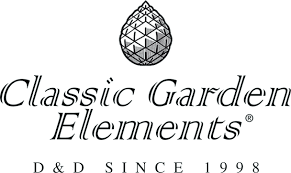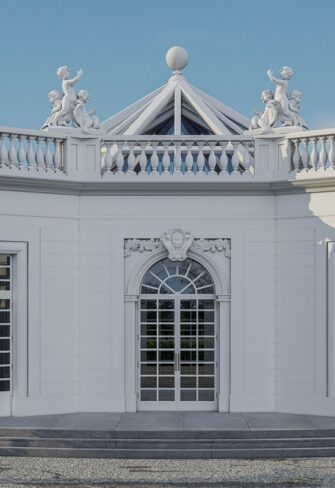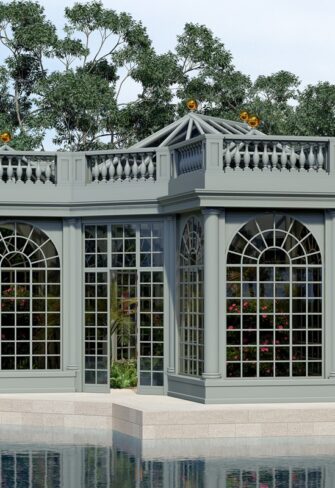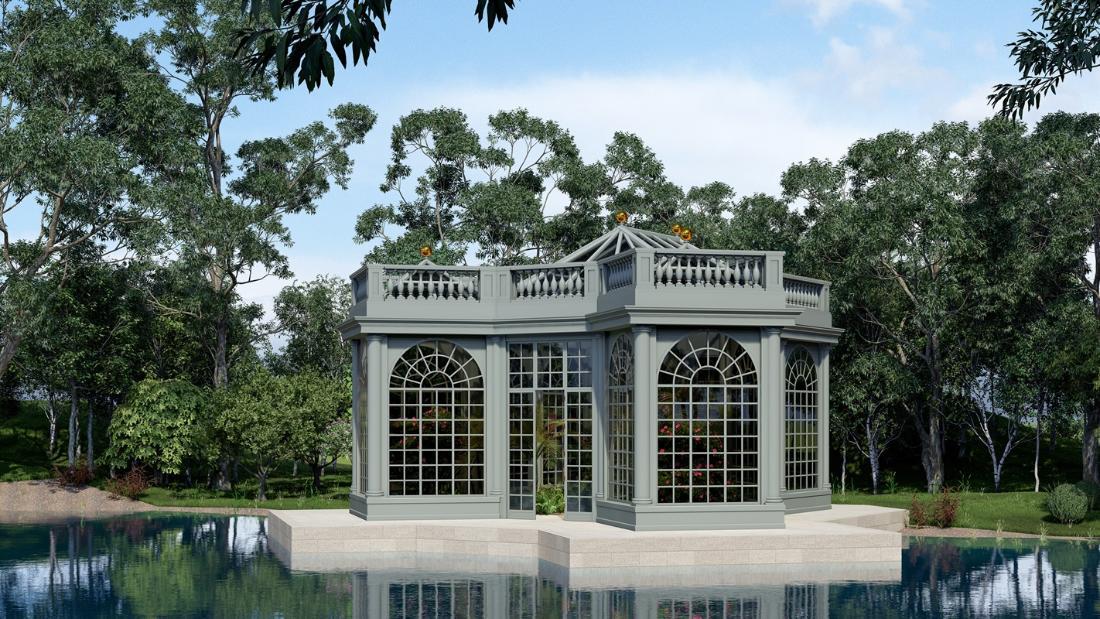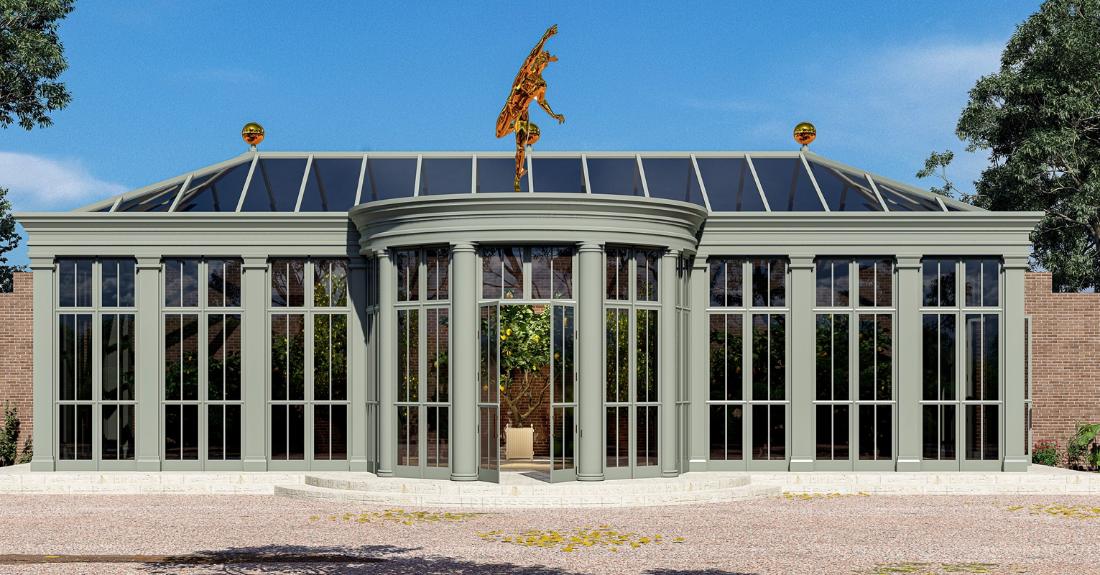Orangery Buildings
Showing all 3 results
ORANGERY BUILDINGS – For Parks and Gardens
Orangeries are distinctive structures originally designed to shelter Mediterranean fruit trees, such as orange, pomegranate, and even exotic banana trees, from harsh winter conditions. Initially, they served as luxurious greenhouses for the landed gentry and affluent society, offering both prestige and an extended growing season for their cherished plants. During the 17th century, the high cost of glass transformed orangeries into undeniable symbols of wealth. As advancements in lighting, heating, and frost protection emerged, a unique and recognisable orangery architecture took shape—a style beautifully reflected in the HOFHEIM Collection’s exquisite orangery buildings.
Orangery buildings trace their origins to Renaissance Italy. The earliest known examples were constructed in Padua in 1545. These initial orangeries were rather modest, featuring minimal heating, often provided by open fires.
Following the Eighty Years’ War, orangeries gained popularity across France, Germany, and the Netherlands. Exotic plants, prized for their fragrance and beauty, were imported by merchants, further enhancing the allure of these structures. Originally, orangeries were functional, seasonal spaces acquired by affluent aristocrats and merchants, such as those in Nuremberg, to protect their treasured plants through the winter months. The growing fascination with exotic, frost-sensitive flora spurred the integration of orangeries into landscape design, establishing them as markers of prosperity.
The Orangery at the Louvre, built in 1617, inspired the construction of grand orangery buildings throughout Europe and Russia. Perhaps the most magnificent example is the one at Versailles, designed by Jules Hardouin-Mansart for Louis XIV’s prized orange and lemon trees. These remarkable orangeries retained their unrivalled prestige until the 19th century when Joseph Paxton’s colossal Crystal Palace in London momentarily stole the spotlight.
The orangeries of the Louvre and Versailles epitomised the status associated with such structures, solidifying their place as must-have architectural features, much like summerhouses or the whimsical “follies” found in grand estates. Wealthy landowners hosted guests amidst the fragrant blossoms of exotic plants, while snow fell outside. Increasingly, orangeries were furnished and repurposed for entertaining, making them ideal venues for celebrations, from weddings to genteel afternoon teas.
In the Netherlands, advancements in glass production further propelled the orangery’s evolution. Dutch craftsmen became pioneers in manufacturing orangery glass, sparking a widespread trend for glazed orangeries across Europe.
By the early 19th century, technological progress introduced innovations such as glass roofs, enhancing sunlight exposure and promoting plant growth. A notable example is the orangery at Dyrham Park, which received a glazed roof about a century after its construction, significantly improving light conditions within.
Steel Orangery Conservatories for Your Garden
The architecture and design of the HOFHEIM Collection’s orangery buildings echo the rich, exotic heritage of these historic structures. Crafted from galvanised and powder-coated steel—reminiscent of the grand 19th-century orangeries—they are built to last for generations. Galvanised and powder-coated steel is impervious to rust, even in coastal environments, and requires virtually no maintenance over the decades. The same durability applies to the high-quality double or triple glazing used throughout.
Two particularly striking orangery buildings available from the HOFHEIM Collection are the SUNNY JAMES Orangery and the OLD GREENHOUSE Orangery. If you’ve ever dreamt of living in a glasshouse surrounded by camellias and lemon trees, now is the time to make that dream a reality by purchasing an orangery building from the HOFHEIM Collection—perfect for your parkland setting or coastal estate.
Speaking of the coast, why not explore our exceptional beach houses, THE HAPPY GEORGE and BLOOMINGDALE BEACH? And for the idyllic shores of Lake Como, we proudly present the GLARUS.


